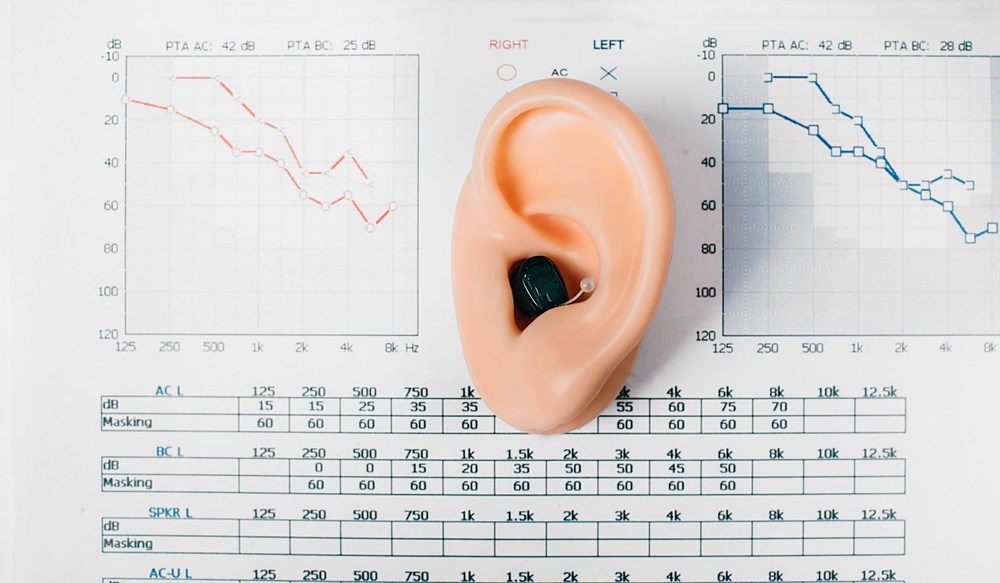Hearing Aid Innovations: What’s New in 2025?
Hearing aid technology continues to improve in ways that directly address

By: admin | February 18, 2025
Improving speech clarity is essential for effective communication, especially for those with hearing loss. When you can clearly hear what’s being said, you can better follow conversations at work, enjoy social events and connect more easily with others. The ability to understand speech without struggling to catch every word enhances your overall quality of life.
Hearing aids have advanced beyond simply amplifying sound; they are now designed to focus on improving speech clarity in various environments. These devices help wearers distinguish voices from background noise, making it easier to understand speech in crowded places like restaurants or busy offices. This improvement in clarity allows individuals to feel more confident in conversations, reducing the need to constantly ask others to repeat themselves.
By enhancing speech recognition, hearing aids enable wearers to engage more naturally in discussions. Whether in a one-on-one conversation or in a group setting, having clearer speech helps people respond quickly and with confidence. The result is smoother communication, which helps maintain social relationships and ensures effective interactions at work and in daily life.
Hearing loss and speech clarity are closely connected because our ability to understand words depends on how well we hear different sounds. When someone has hearing loss, certain frequencies of speech may become harder to detect, making it difficult to distinguish between similar sounds like s and f or p and b. This can cause words to blend together, making conversations harder to follow, especially in noisy environments. As a result, people with hearing loss may find themselves asking others to repeat things more often or struggling to keep up with fast-paced discussions.
Over time, difficulties with speech clarity can lead to frustration and withdrawal from social situations. If hearing loss goes untreated, the brain may also have a harder time processing speech because it isn’t receiving clear signals from the ears. This can make communication even more challenging, impacting relationships and daily interactions. However, wearing hearing aids or other assistive listening devices can help improve speech clarity by amplifying the right sounds and filtering out background noise, making it easier to engage in conversations with confidence.
Hearing aids are designed to enhance your hearing by adjusting sounds to match your specific needs. They’re more than just simple sound amplifiers. At the center of each hearing aid is a small digital processor that captures sound through a microphone, analyzes it and then fine-tunes it before delivering it to your ear. This process helps reduce background noise, highlight speech and balance different sound levels, making conversations and everyday listening clearer and more comfortable.
The goal is to help you hear what you want to hear as clearly as possible. By doing so, these devices can significantly improve your ability to understand speech in challenging listening situations like noisy environments or group conversations.
The digital processor can also be programmed by an audiologist based on your unique hearing loss identified during a comprehensive hearing evaluation. This customization ensures that the device enhances those frequencies where you need more help while not over-amplifying those where you don’t. Understanding how hearing aids work can provide clarity on how they enhance sound and improve speech recognition. This knowledge can help you make more informed decisions when working with a audiologist to find a device that suits your needs.
There are many types of hearing aids available, each with unique features designed to improve speech clarity. Some hearing aids come equipped with directional microphones that focus on the sound coming from in front of you, usually where the person you’re talking to will be. This feature can help you concentrate on your conversation partner in a noisy environment.
Some devices also have noise reduction technology that distinguishes between speech and noise signals, reducing the volume of the latter. This means that even in a bustling cafe or a windy park, your hearing aid can help you follow conversations more easily. Another useful feature is feedback cancellation, which prevents the annoying whistling sound that can occur when a hearing aid microphone picks up sounds emitted by its speaker.
Also, telecoil technology this allows your hearing aid to pick up sound signals directly from public loop systems installed in places like theaters or churches, improving your listening experience in these environments.
However, while these features can significantly enhance speech clarity, they aren’t substitutes for good communication strategies. You’ll still need to face the person speaking and watch their facial expressions and gestures for clues about what they’re saying.
By discussing these options with an audiologist during your appointment, you’ll be better equipped to make an informed decision about which device will best meet your needs.
Digital signal processing is an advanced technology that allows hearing aids to deliver clear, high-quality sound that can greatly improve your communication experiences. DSP involves converting incoming sound into digital code, then manipulating this code in various ways before converting it back into a signal for your ear to hear.
One of the significant benefits of DSP is its ability to reduce background noise while enhancing speech sounds. This feature is particularly useful when you’re trying to follow a conversation in a noisy place. The DSP analyzes the sounds around you and prioritizes human speech over less important noises like traffic or wind.
Digital signal processing allows for greater customization of hearing aids by your audiologist. They can program these devices according to your unique pattern of hearing loss, ensuring that you receive optimal assistance where needed most.
Directional microphones in hearing aids help improve speech clarity by focusing on the sounds coming from in front of you while reducing background noise from other directions. This can make conversations easier to follow, especially in noisy places like restaurants or social gatherings. Unlike traditional microphones that pick-up sounds from all around, directional microphones help you concentrate on the person speaking without being distracted by surrounding noise.
To get the most out of directional microphones, it’s important to position yourself in a way that maximizes their benefits. Facing the person you’re talking to and minimizing background noise whenever possible can enhance their effectiveness. Some hearing aids even have automatic settings that adjust the microphone focus based on your environment, making it easier to understand speech in different listening situations.
Noise reduction features of hearing aids can significantly enhance your ability to follow conversations in noisy settings. These features work by differentiating between speech and noise, effectively reducing the volume of unwanted sounds. For instance, if you’re trying to have a conversation in a busy environment, noise reduction can help minimize background chatter or music, allowing you to focus on the person speaking. However, while these features can significantly enhance your ability to follow conversations in noisy settings, they should be used in conjunction with good communication strategies like facing the speaker and observing their facial expressions and gestures for added context.
This process involves adjusting your hearing aid settings to match your specific hearing needs and lifestyle preferences. Your audiologist plays a key role in this process, using their expertise to fine-tune the device based on your unique pattern of hearing loss identified during a comprehensive evaluation. This personalized approach ensures that the device enhances those frequencies where you need more help while not over-amplifying those where you don’t, resulting in improved speech understanding and a more enjoyable listening experience overall.
Adjusting to improved speech clarity with new hearing aids can take time and patience. At first, certain sounds may seem sharper or more noticeable, much like how vision appears overly sharp when wearing a new pair of glasses. As your brain adapts, these sounds will begin to feel more natural, making conversations easier to follow. This adjustment period varies for each person, depending on their level of hearing loss and how long they have gone without hearing certain sounds. Gradually increasing wear time and practicing in different listening environments can help ease the transition, allowing you to become more comfortable with your hearing aids over time.
Start by wearing your hearing aids in quieter environments and gradually increase the amount of time you use them each day. This will give your brain the chance it needs to adapt. It can also be helpful to read aloud or listen to audiobooks during this period. These activities can help train your brain to understand speech more clearly with the help of your new device.
Lastly, remember that communication with your audiologist is key throughout this adaptation phase. They are there for guidance and support as you adjust and can make any necessary adjustments along the way.
Regular upkeep ensures that these devices continue to function optimally, providing you with consistent speech clarity and sound quality. Make it a habit to clean your hearing aids daily, check for any signs of damage and schedule regular appointments with your audiologist for professional cleaning and adjustments.
Regular check-ups with your audiologist are significant for continued success with improved speech clarity and overall communication experiences. Regular appointments are not just about maintaining your hearing aids; they’re also a chance for your audiologist to monitor any changes in your hearing and adjust your device settings accordingly. This ongoing professional care is key to ensuring continued success with improved speech clarity and overall communication experiences.
Understanding and managing hearing loss is a process that requires patience, practice and professional guidance. Improving speech clarity with hearing aids can significantly enhance your daily communication experiences and overall quality of life. Addressing hearing loss early can play an important role in improving speech clarity and overall communication. Finding the right hearing aids for your needs can make conversations easier and more natural.
With the right adjustments and guidance, hearing aids can help you better understand speech in different environments. Taking the time to explore your options and work with a professional can lead to a more comfortable and effective listening experience.
If you’re struggling with understanding speech or have concerns about your hearing health, don’t hesitate to reach out for help. Our team at Siouxland Hearing Healthcare P.L.C., located in Sioux City, IA, is here to assist you on this path towards improved communication and better living. You can contact us today at (712) 266-3662 for more information about how hearing aids can help with speech clarity or to schedule an appointment.
Tags: benefits of hearing aids, hearing aid repair, hearing aid styles

Hearing aid technology continues to improve in ways that directly address
By: admin | October 20, 2025

Hearing aids used to be pretty straightforward devices with limited
By: admin | July 29, 2025

Your hearing aids are with you all day, every day, so they need to work as
By: admin | June 20, 2025
